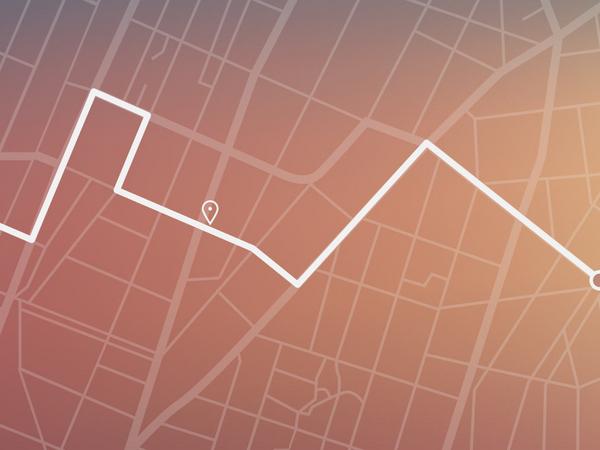Route calculation
Show me similar content
Performance Support
Imagine you love Italy and travel there once a year on vacation. This summer, you want to explore a new city and have chosen Milan. So you get in your car, set the destination in your Sat Nav and let the friendly voice guide you along. But just a few miles down the road, you’re starting to get tetchy, as you already know the way to the Brenner Pass like the back of your hand. As your route planner can’t tell where you need its assistance, but when you’ll be fine on your own, you grit your teeth and let it direct you the entire way from A to B.
Step-by-step navigations in overlay mode that cover your entire screen work in exactly the same fashion. They go through all the motions in the IT application’s process – from start to finish. If you bite your lip and manage to patiently click your way through to the end, you’ve done well. But if you’re in more of a hurry, the temptation will quickly grow to call the support hotline – or, even worse, you’ll simply throw in the towel and find a way of sidestepping the application.
Walkthrough navigations close our eyes to what matters
After unpacking your things in your room, your top priority is to see Milan Cathedral and Leonardo da Vinci’s famous fresco. You’ve also heard that Italy’s second-largest city is renowned as an international hotbed of fashion and design. However, instead of wondering in awe through the centuries-old streets, your gaze is fixed hard on your Sat Nav rather than anything else – the technology that makes your life so much easier. As a result, the device takes you on the most direct route around all the sights, but fails to tell you all about the city’s history or offer you tips on current events. You’ll probably not find your way back to the hotel unaided, either. Your only concern is that its battery will match your own staying power.
It’s a similar story with full-screen, step-by-step navigations. You are heavily dependent on a special application without providing additional information of any kind. Even with the best will in the world, it’s impossible to develop a proper understanding of the process with the aid of this tool, as that’s simply not what this technology is meant to achieve. And let’s be honest – who has the time to spare in our stressful working lives to go scrabbling around in the depths of SharePoint for special eLearning units or background information from management?
Does walkthrough navigation improve user adoption?
Walkthrough navigations make for inflexible users
You enjoyed Milan so much that you’d like to show a friend around the vibrant city next year. In your excitement as the time nears, you go and forget to update the maps on your Sat Nav, so although a new highway has now been completed that would get you there quite a bit faster, it doesn’t even show you this option. Never mind, the journey is what it’s all about in any case... Isn’t it?
Walkthrough navigations designed to work as overlays can’t react to updates, either. If your user interface suddenly looks different or unfamiliar features pop up, the tool immediately can’t cope. Yet to stay afloat in the sea of global competition, these days companies constantly update their IT applications, every four to six weeks – if anything, increasingly frequently. This momentum is almost too much for this kind of navigation aid to keep up with, the never-ending adjustments too fiddly. It’s even quite possible that the next release might have been issued before you’ve even incorporated the previous ones!
State-of-the-art navigation is within your grasp
If you think of the latest navigation devices that can be voice-controlled by the driver, they are programmed to keep their thoughts to themselves until you actually call for advice. They also offer additional assistance if desired, such as locating the nearest filling station or offering key information about your destination. The advantage is that you can focus on driving, seek guidance when you need it, and arrive at your vacation spot in a good mood.
Similar solutions are also to be had in IT – step-by-step navigation aids that provide the required assistance at the edge of the screen. Ideally, they’re only two clicks away and start navigating at precisely the point the user has reached in the process. It’s then you, the user, who performs the action yourself. This kind of support keeps you constantly alert, “in the driver’s seat” and on course, even if software has been updated or a process slightly adjusted. Not only that, but you can also display explanatory eLearning units and additional background information if you so wish. This offers the perfect solution to consign irritating searches and IT frustrations to the past.
Show me similar content
Performance Support


